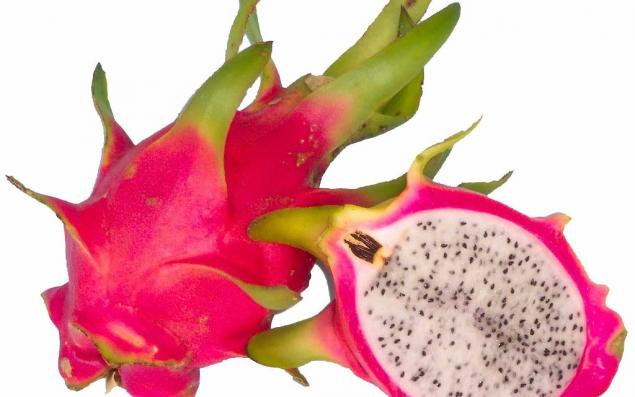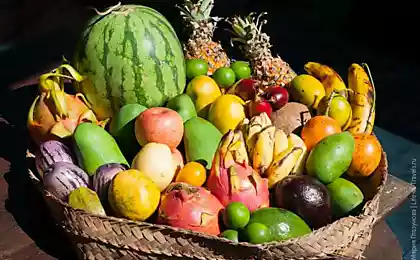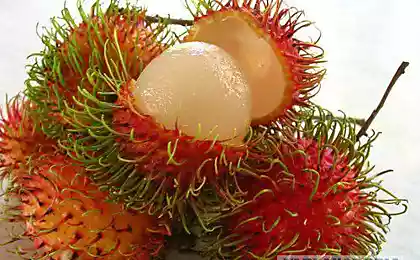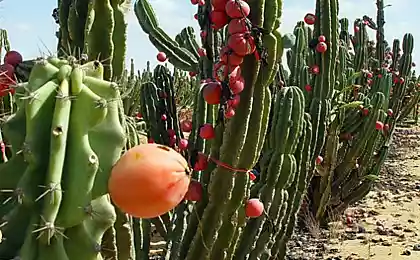780
Pitahaya (The draconian piece of fruit)

Pitahaya - unusual fruit. The first mention of it occurs in the Aztec and belongs to the 13th century. Eating the flesh of the Indians roasted seeds, milled and used for their pohlebok. Currently, it is grown in southern Mexico, some countries in Central and South America, Vietnam, as well as in Israel (in the Negev).
For outstanding looks fruit called "dragon fruit» (dragon fruit) or "prickly pear» (prickly pear). This bushy tree cactus, at the ends of the stems which ripen juicy fruit. The flowers appear in it strictly for the first and fifteenth day of the month.
Depending on the species, the size of the fruit varies, flesh color (white, pink, purple), skin color (from yellow to orange, from red to purple) and the surface texture of the fruit (a small growth, with subtle color scales). The fruit pulp is always filled with small black semyachkami who decided to clean.
The taste is slightly inferior Pitahaya her appearance - not fragrant, desaturated, almost sweet.
Attractive to look at the fruits pitihayi widely used in cooking and above all in the production of various spirits. Juice and pulp are added into the candy, ice cream, sorbet, yoghurt and various dairy products from the pulp is cooked jam, jellies and sauces. Pitahaya juice mixed with lemon and lime for the preparation of "Summer drinks».
For the preparation of pitaya to eat fruit is generally cut vertically into two halves. Can then either be cut into slices these halves (just as the cut melon) or bale pulp with a spoon. Although pitaya seeds rich in valuable lipids, they usually are not digested, unless they are chewed. The peel is inedible, except that it may contain pesticides.
Calorie Pitahaya (the Dragon fruit)
Low-calorie dietary product, 100 g of which there are only 45 calories. It is characterized by a high content of carbohydrates, but in moderate amounts will not harm the figure.
Useful properties Pitahaya
Pitahaya malokoloriyna contains proteins, water, phosphorus, calcium, iron, vitamin C, PP, B1 (thiamine), B2 (riboflavin), B3 (niacin).
Another great attraction of a fruit have added the latest results of medical research. In their view, the use of Pitahaya helps get rid of stomach pains. In addition, the fruit is useful diabetes or other endocrine disease.
Fruit is useful diabetes, a positive effect on the cardiovascular and immune systems.
Capable of shooting pain in the stomach.























